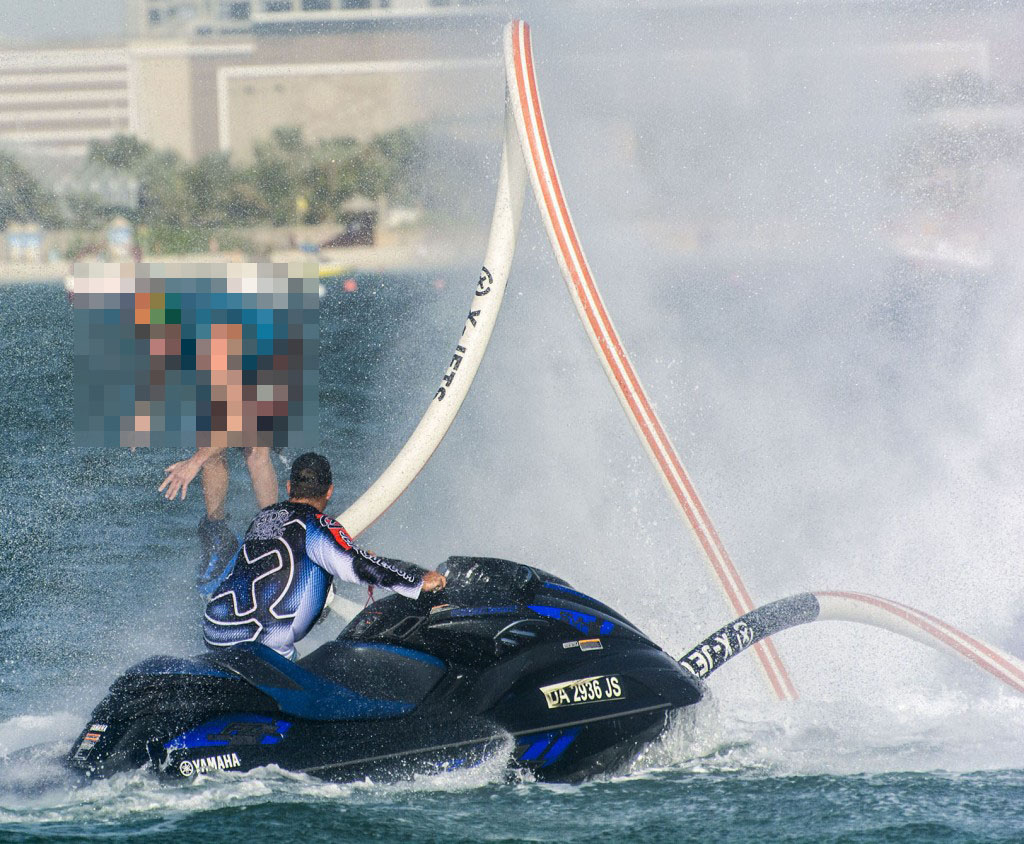When a accomplished pilot does maneuvers on the jetboard or jetpack, a Jetblade or other, the forces are transferred along the hose back to the jet ski, some of the forces are in waves pushing the ski, some are in tension, pulling the ski. These hose waves can be huge, reaching almost half as high as the maximum height of a pilot. These waves travel back to the jet ski base unit and can wrap around the nose of the ski and even flip it over. In competitions, the responsibility falls on the rider to keep the hose calm and make sure the jet ski does not get flipped over. If you watch a good rider, he spend a lot of his attention keeping an eye on the hose and making sure he does not do too many tricks in a certain direction in order to keep the hose calm. Team-Z calls this “hose management” and has a whole category of points and penalties dedicated to it in their contests. Different teams have come up with different solutions to try to cut down on these forces, shorter tighter ropes, elastic ropes, different connections. These connections and modifications are banned in the closed competitions because everyone has to ride the stock equipment. This has been the status quo from the onset of jet ski attached hydro, no changes, same problem. Solution? Riders change the style of their riding to prevent it from happening, they hold back. Holding back is bad, we needed to find a solution…
How about designing a better way to control the hose, the power channel? We have been testing a new system to distribute the pull forces from the pilot to the base unit, the jet ski. This same system changes the dynamics at the front of the ski, increasing the flex strength of the hose and muting the hose wave as it reaches the ski. We are calling this the Tension X Sleeve and it marks a break through in hydro flight. Since the beginning we have looked for a way to anchor the hose to the front of the ski. Difficult because the hose is flexible and cannot have anything directly attached to it.
We use one additional two meter long (six feet) layer of urethane laminated tube over the top of the power channel, located it 80% forward of the nose of the ski. It’s the black sleeve in the photo above. The mount strap goes through the sleeve and wraps the main power channel. This has two-fold benefits, when the main power channel pressurizes, the outer X-Tension Sleeve locks into place, effectively transferring the forces from the hose to the bow loop at the front of the ski. This distributes the forces primarily at the front of the ski instead of the rear. This feature will be included in all shipments of Jetblades.
We will continue to experiment with multiple stage Tension X Sleeves for different pro applications. The obvious next step is to extend longer into the working section of the hose and the further obvious step is to add a stepped third wrap, like the progressive flex of a fishing pole. We encourage the wider jetboard community to do their own experiments and help develop better ways to allow pro-riders to go bigger without having to hold back. This is our open source contribution to hydro. We won’t patent it or stop anyone from using or developing it. We follow Wheaton’s Law when it comes to patenting and information.

